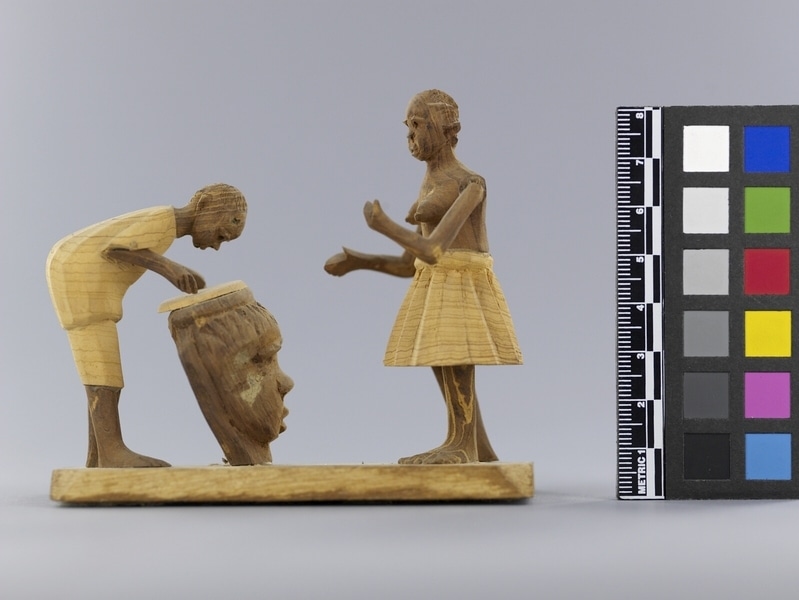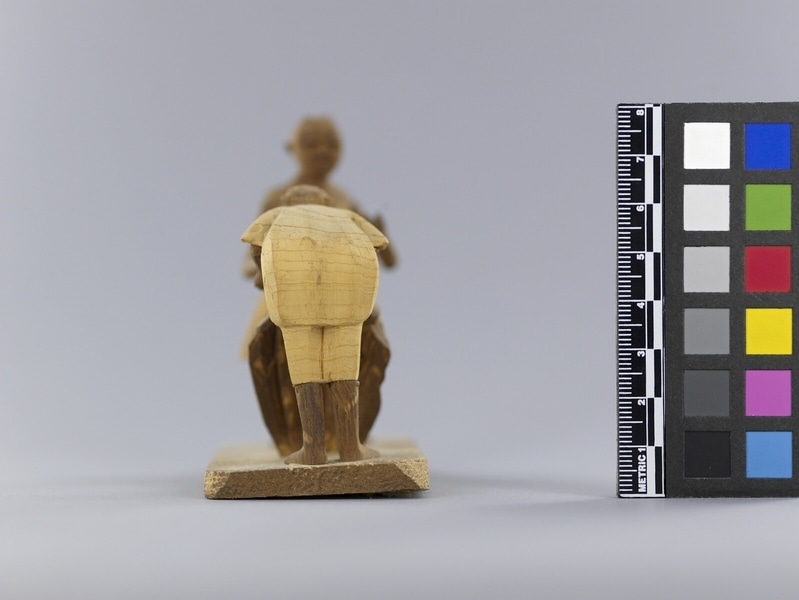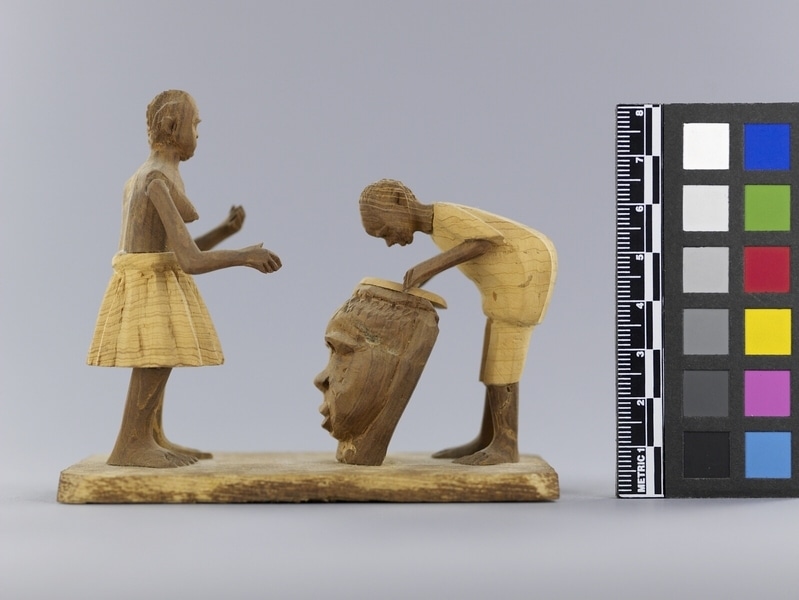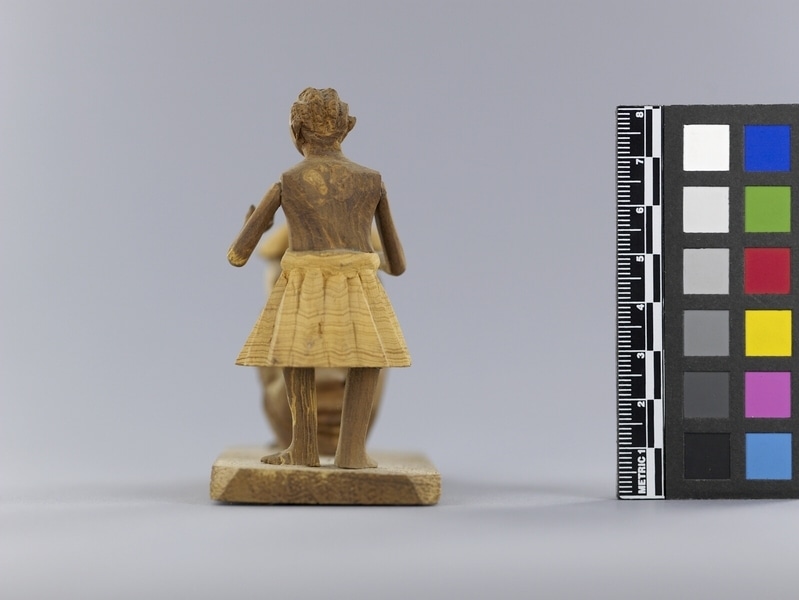Thorn Carving Item Number: Af397 from the MOA: University of British Columbia




Description
Two figures representing people. One is a man with a bare head, and feet, and he is wearing knee-length pants and a shirt while he is bending at the waist with his fingers touching the head of a round drum which rests on the floor. The drum base has a large human ritualistic face carved on the front. Facing the man, there is a woman wearing a knee-length pleated skirt, and standing with her arms bent, and outstretched with her feet apart, and appearing to be dancing. Clothes and drum head are light yellow-brown. Skin, hair, and drum base are dark brown. The figures are mounted on a rectangular wood base.
History Of Use
Thorn carvings are miniatures depicting scenes from Nigerian life. This type of carving began circa 1930. Thorns vary in size. They can be as large as 12.7 cm. long and 9.6 cm. wide. They are comparatively soft and easily carved. The light yellow-brown thorn and the dark brown thorn come from the Ata tree; the light red-brown thorn comes from Egun trees. The parts are glued together with viscous paste made from rice cooked with water. They are carved by men.
Cultural Context
craft; tourist art
Item History
- Made in Nigeria before 1972
- Collected during 1972
- Owned by Andrew Stewart and Jessie Stewart before February 8, 1980
- Received from Andrew Stewart (Donor) and Jessie Stewart (Donor) on February 8, 1980
What
- Name
- Thorn Carving
- Identification Number
- Af397
- Type of Item
- carving
- Material
- atum thorn, rice adhesive, stain, wood and egun thorn
- Manufacturing Technique
- carved and glued
- Overall
- height 9.0 cm, width 10.3 cm, depth 4.8 cm
Who
- Culture
- Yoruba
- Previous Owner
- Andrew Stewart and Jessie Stewart
- Received from
- Andrew Stewart (Donor) and Jessie Stewart (Donor)
Where
- Holding Institution
- MOA: University of British Columbia
- Made in
- Nigeria
When
- Creation Date
- before 1972
- Collection Date
- during 1972
- Ownership Date
- before February 8, 1980
- Acquisition Date
- on February 8, 1980
Other
- Item Classes
- carvings & sculpture
- Condition
- good
- Accession Number
- 0590/0083